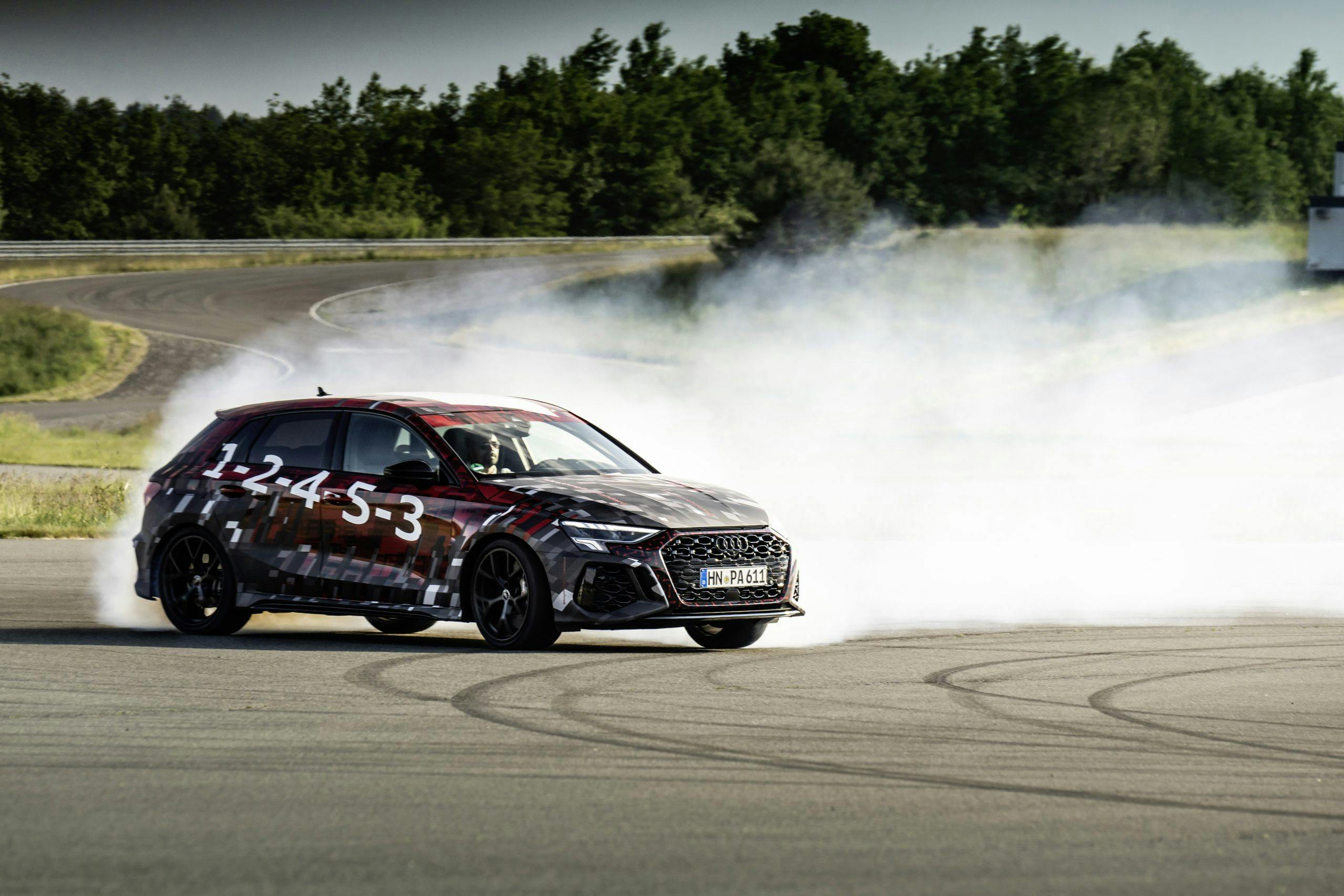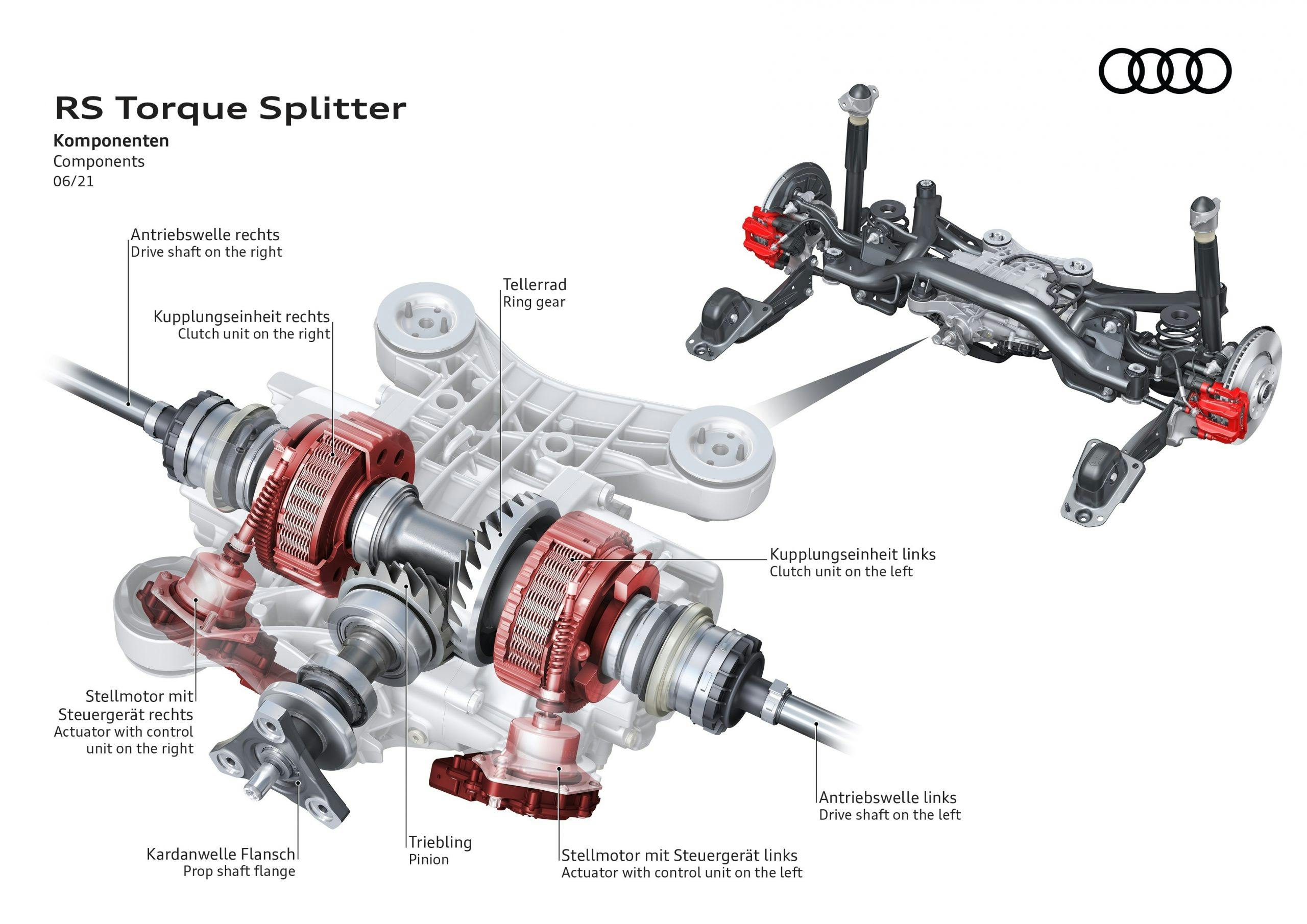Hyundai’s rowdy new Elantra N, Audi RS 3 drifts into 2022, Goodwood gets go-ahead
Welcome to The Manifold, our fresh daily digest of news and what’s happening in the car world.
Hyundai’s Elantra N is shaping up in style
Intake: Let the teasing begin! Hyundai revealed two new images of the Elantra N, the next model in the automaker’s lineup to get the full-fledged N treatment. It follows the Kona N, which was revealed in April of this year. Although there’s plenty left to be seen on this new car, we can see already that it shares some key design details with the other N variants. Specifically, the red accents along the N-specific side sills match those on the Kona and Veloster N. There’s also a neat rear wing to add a bit of sporty flare to the keister of those hotted-up economy car.
Exhaust: Remember when Hyundai was the bargain-basement brand? Its march up the appeal scale with bold new designs, truly engaging sports cars, and competitive quality has been a meteoric rise for the ages. We’ve had plenty of seat time in this car’s oddball three door cousin, the Veloster N, and we’d happily bet that if it’s anything similar to that machine (it will be), the Elantra N will become one of our favorites in the segment. Jetta GLI and Civic Si should be looking over their shoulders.
New Audi RS 3 goes sideways, adds more hp than Euro model
Intake: The 2022 Audi RS 3 will have a drift mode, using the same hardware as in the new VW Golf R with which is shares a platform. In this application, the system is dubbed the RS Torque Splitter, and it will let drivers powerslide in a fashion not usually endemic to front-drive-derived vehicles. The RS Torque Splitter uses an electronically controlled, multi-disc wet clutch on each rear drive shaft to apply torque vectoring. On the road it will send more torque to the outer rear wheel when cornering to reduce understeer, but on a track it can send everything to a single rear wheel allowing the car to drift. A number of sensors monitor acceleration, yaw, steering angle, gear, and throttle to help the driver throw heroic shapes on a circuit. The RS 3 will carry on with its trademark five-cylinder turbocharged engine, packing the same 2.5-liter displacement as before but now with 401 hp in the U.S., compared to 394 hp in Europe. Audi claims 0-62 mph in 3.8 seconds and a top speed of 180 mph, with a seven-speed dual-clutch transmission handling shift duty.
Exhaust: The RS 3 promises to be meaner and more refined than ever, but is driftability the new measure of performance? When Ford offered a drift-stick as an option on the Focus RS, many saw it as just a gimmick, but then Mercedes-AMG gave the A45 hatchback a drift mode, and now VW and Audi have followed, it looks like the ability to act like a hoonigan is becoming standard. Does any real customer honestly use such a feature more than once? How about we leave drifting on the table and bring the hatchback to America; if the RS 6 Avant sells, this would as well.
Goodwood is green after last-minute coronavirus scare
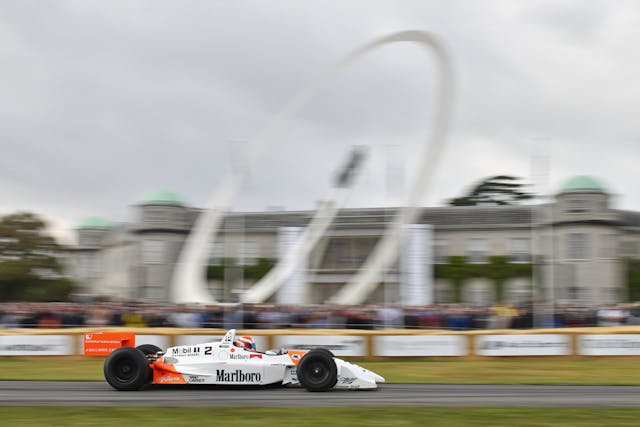
Intake: The Goodwood Festival of Speed has received the green light to run at full capacity from July 8-11. The U.K. government’s decision to delay social distancing restrictions put the event in jeopardy, but it will now take place as part of the Events Research Programme. That means that everyone attending will have to have had two vaccinations at least 14 days before the event or show proof of a negative test taken within the previous 48 hours. Scientists will also closely monitor any post-event infections. Discussions are still underway about whether the British Grand Prix on July 18 will be staged in front of a capacity crowd. U.S. fans can watch the action at Goodwood live on its YouTube channel.
Exhaust: It will be a welcome return for fans to the famous British country house and hillclimb after 2020’s events were replaced by the spectacular-but-spectator-free SpeedWeek.
No more ICE development for Audi after 2026
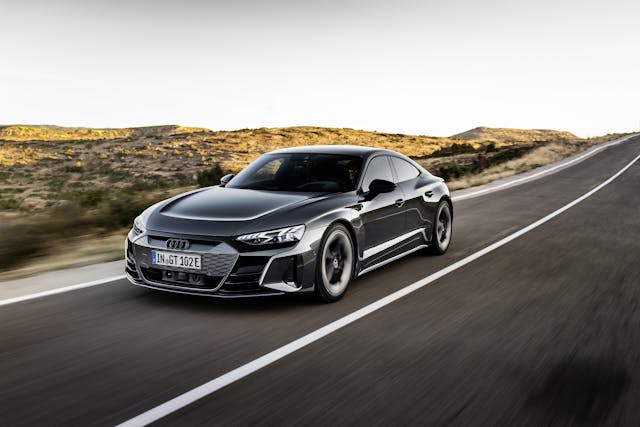
Intake: The end is nigh for development of internal combustion engine development at Audi. At a management meeting last week, CEO Markus Duesmann announced that the company would end development of gas and diesel engines by the end of 2026, turning its development efforts exclusively to electrified powertrains, according to a report from Automobilwoche, a German news site. This doesn’t mean that the company won’t sell ICE-powered cars beyond 2026, however; the models launched in the ensuing years leading up to the 2026 cutoff will continue to be sold through the early 2030s. Beyond then, Audi will become exclusively electric.
Exhaust: Audi has, historically, been known as one of the most tech-forward automakers in the industry, so this announcement shouldn’t come as a surprise. Expect to see the e-tron sub-brand flourish as the brand that brought us Quattro hopes to become a leader in the EV space. So it goes, but we will mourn Audi’s five-cylinder almost as much as we will the naturally aspirasted V-10 from the R8.
2022 Kia Soul drops manual transmission, adds larger infotainment screens
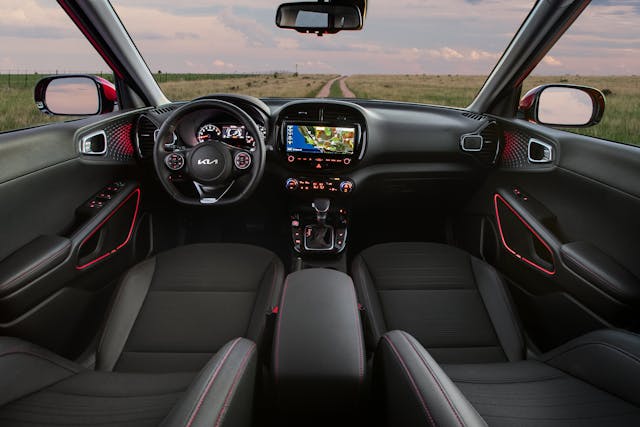
Intake: Kia’s quirky Soul crossover is coming off a banner sales year. To keep the ball rolling, 2022 models in every trim but the base LX are getting 10.25-inch display with navigation included. The six-speed manual transmission, previously only available on the LX, is gone, raising the price on the entry-level Soul by $1690 to $20,365. The LX also gets a larger screen for 2022, but will have to settle for, an eight-inch version, up from about seven inches last year. Cosmetically the 2022 models are mostly identical to their 2021 predecessors, save for the addition of Kia’s new badging. The 147-horsepower naturally aspirated four-cylinder and 201-horsepower turbocharged four also carry over.
Exhaust: The price hike may hurt some value-minded shoppers, but it seems that it’s just more of the same trend that we’re seeing across the industry. The low take rate for the manual just wasn’t worth Kia’s effort. Tap the sipper nozzle on that hamster water bottle and pour some out for the clutch pedal.

